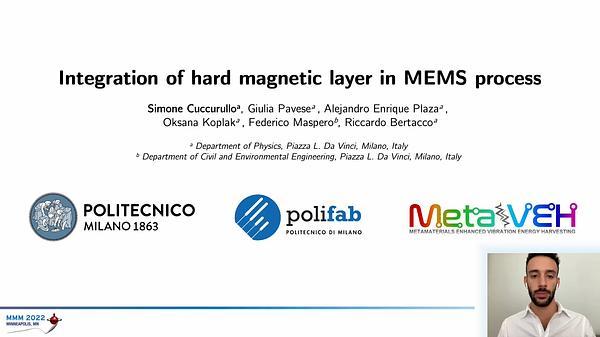Would you like to see your presentation here, made available to a global audience of researchers?
Add your own presentation or have us affordably record your next conference.
Tunable perpendicular magnetic anisotropy (PMA) in thin film magnetic devices provides an isotropic in-plane permeability, necessary for integrated microwave and mm-wave devices and an opportunity to break inversion symmetry that allows implementations of non-reciprocal devices like circulators and isolators. In ferrimagnetic alloys like GdxCo1-x, this is usually achieved by changing the composition such that the magnetic properties lie on either side of the composition-dependent magnetic compensation at room temperature, as shown in Fig. 1. Different compositions achieved in this work by changing the sputtering power of the Gd target show that magnetic compensation window lies between x = 28-32, and the effective anisotropy diverges about the compensation point.
One less explored pathway is the incorporation of oxygen, which until now has been ruled out as a detriment to the ferrimagnetic properties 1. Here, we show that preferential oxygenation of GdxCo1-x through a reactive sputtering process, such that the cation (Gd and Co) to oxygen anion ratio is 1:1, increases the effective anisotropy energy density by two orders of magnitude compared to the corresponding alloys without oxygen. X-ray photoelectron spectroscopy reveals that strong PMA with an optimal oxygen flow results in a Co-deficient stoichiometry of Gd21Co28O51, which suggests that strong ferrimagnetic order likely arises from a superexchange-like coupling between Gd and Co via the non-magnetic O 2.
This can produce a spontaneous magnetization in the out-of-plane direction due to weaker exchange interactions within the alloy in a heavy-metal/ferrimagnet heterostructure for PMA. Even greater anisotropy fields on the order of 11 kOe are achieved in a super-lattice with 10 repetitions of the GdxCo1-x heterostructure unit-cell, which corresponds to an operating frequency of 30 GHz. Therefore, not only does oxygenation increase PMA and provide tunable anisotropy to amorphous Gd-Co films, but the oxygen incorporation itself also increases the resistivity of the film, making it even more suitable for that frequency range.
References:
1 K. Ueda, A. J. Tan, and G. S. D. Beach, AIP Advances, vol. 8, no. 12, p. 125204, Dec. 2018.
2 R. J. Gambino and J. J. Cuomo, Journal of Vacuum Science and Technology, vol. 15, no. 2, pp. 296–301, Mar. 1978.

Fig. 1. Saturation Magnetization and Effective Anisotropy Energy Density for varying GdxCo1-x compositions for x = 18-39.
